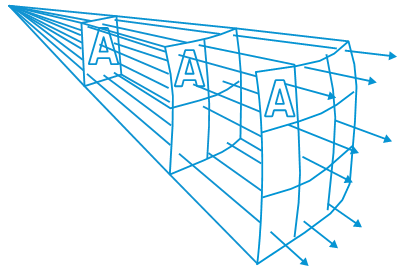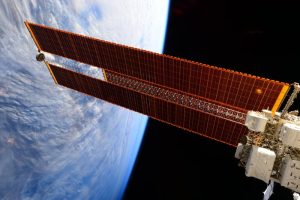L'énergie du soleil - L'énergie solaire au service de l'exploration spatiale
Dans cette série d'activités, les élèves découvriront deux concepts qui influencent la conception des panneaux solaires pour les missions spatiales : la loi du carré inverse et l'angle d'incidence.
Les élèves effectueront deux recherches simples en utilisant une cellule photovoltaïque (cellule solaire) et une source de lumière.
Tout d'abord, ils mesureront comment la puissance produite par les cellules solaires varie en fonction de la distance par rapport à la source lumineuse et tenteront de retrouver expérimentalement la loi du carré inverse pour l'intensité lumineuse.
Les élèves réaliseront ensuite une deuxième expérience pour étudier la dépendance de la puissance de sortie de la cellule solaire par rapport à l'angle d'incidence. Enfin, ils appliqueront ces concepts à des missions spatiales réelles de l'ESA.
Objectifs d'apprentissage
Tranche d'âge :
14 - 18 ans
Temps
Préparation : 1 heure
Montage de l'expérience : 20 minutes
Leçon : 1 heure et 30 minutes
Montage de l'expérience : 20 minutes
Leçon : 1 heure et 30 minutes
Ressource disponible en :
Activité 1 : La loi du carré inverse
Dans cette activité pratique, les élèves calculent la puissance d'un panneau solaire en mesurant le courant électrique et la différence de potentiel électrique et tentent de retrouver la loi du carré inverse à partir de leurs mesures expérimentales.

Équipement
Activité 2 : L'angle d'incidence
Dans cette activité, les élèves découvriront l'importance de l'angle d'incidence et les avantages d'un positionnement optimal des cellules solaires. Grâce à une expérience, ils mesureront l'influence de l'angle d'incidence sur la production d'énergie.
Équipement
Activité 3 : Explorer l'espace avec l'énergie solaire
Dans cette activité, les élèves s'entraînent à utiliser la loi du carré inverse dans le cadre de missions spatiales réelles de l'ESA. Ils découvriront comment les propriétés de la loi du carré inverse influent sur la taille des panneaux solaires et comment l'angle d'incidence est d'une importance capitale pour les missions qui s'aventurent près du Soleil.
Équipement
Le saviez-vous ?
La Station spatiale internationale (ISS) est alimentée par des panneaux solaires. L'image de droite montre certains des panneaux solaires de l'ISS, qui accueille jusqu'à six astronautes à la fois. Lorsque l'ISS est en orbite autour de la Terre, les panneaux solaires peuvent être tournés pour être orientés plus directement vers le Soleil. Les panneaux couvrent une surface de 2500 m³, soit l'équivalent de la moitié d'un terrain de football.

Panneaux solaires sur l'ISS
Mots-clés :

Bras robotique - Devenez ingénieur spatial pour un jour
Brève description : Dans cette activité, les élèves apprendront comment fonctionne leur bras et construiront un bras robotique inspiré de ce dernier. Les élèves comprendront les différents

AstroFarmer - Apprendre les conditions de croissance des plantes
Brève description : Dans cette série de six activités, les élèves étudient les facteurs qui affectent la croissance des plantes et établissent un lien entre ces facteurs et la culture des plantes dans l'espace.

Space Bears - Expérience de laboratoire avec les Tardigrades
Brève description : Dans cette série d'activités expérimentales, les élèves vont étudier les capacités de survie des tardigrades, également connus sous le nom d'ours d'eau. Ils exposeront les conditions



